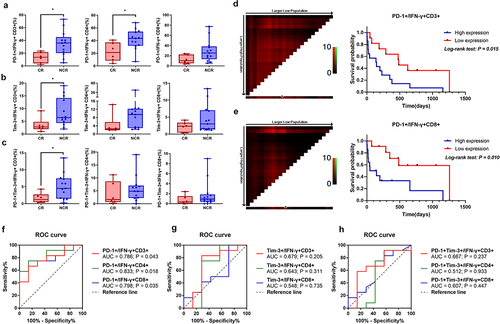Figures & data
Figure 1. Increasing PD-1 and Tim-3 on IFN-γ+ T cell subsets in PB in AML.

Figure 2. Higher PD-1 and Tim-3 on IFN-γ+ T cell subsets are related with poor prognosis in AML.

Figure 3. Distribution and frequency of PD-L1/PD-L2/Gal-9/Tim-3 in AML cells in PB and BM.

Figure 4. The characteristics of the secretory cytokines in ICI-treated T cells in vitro detected by protein chip.


